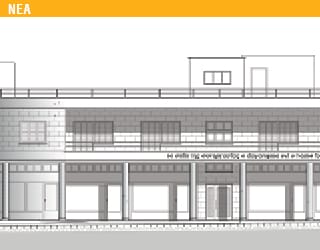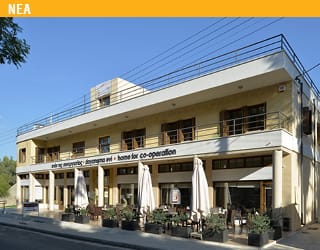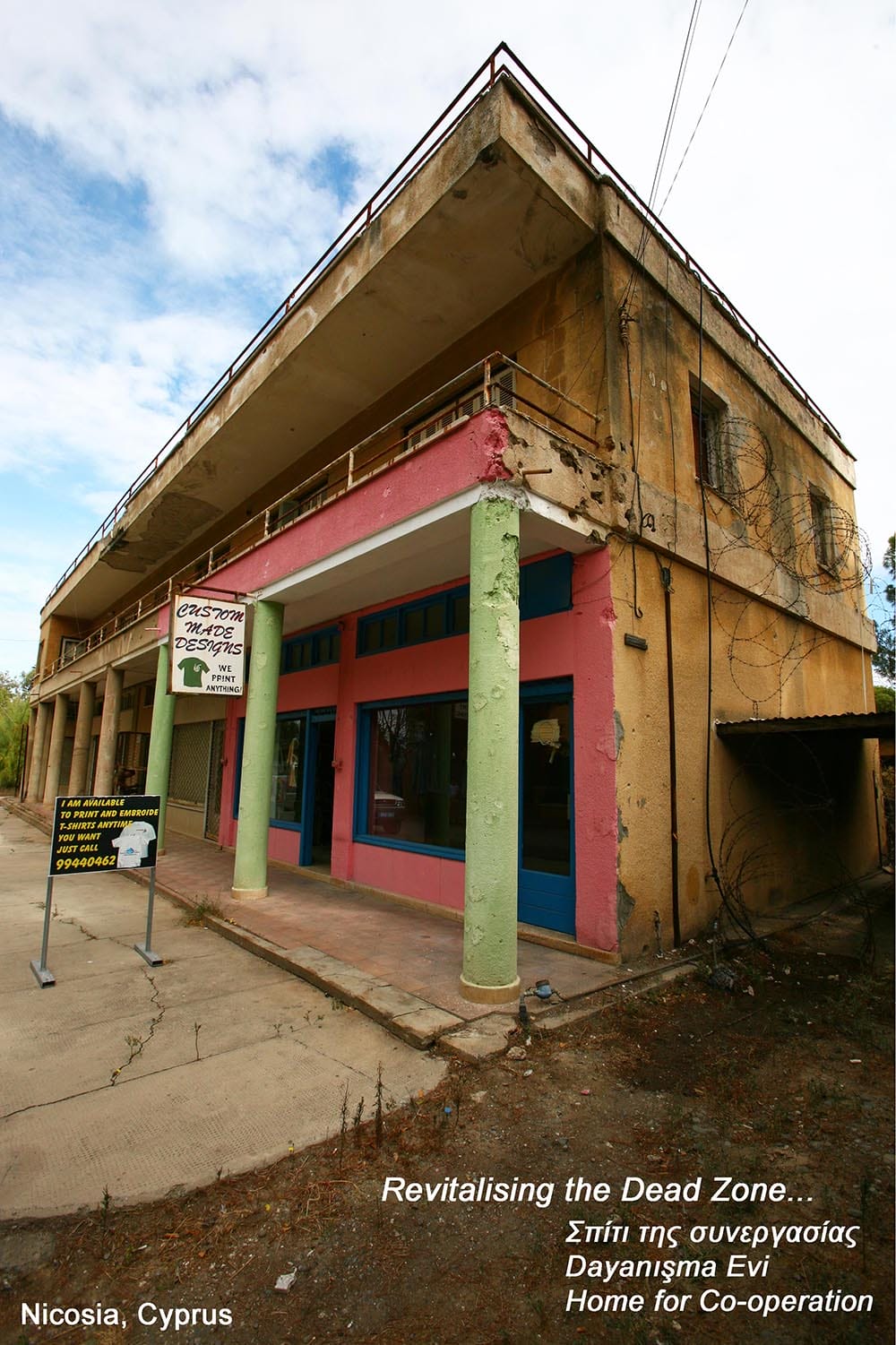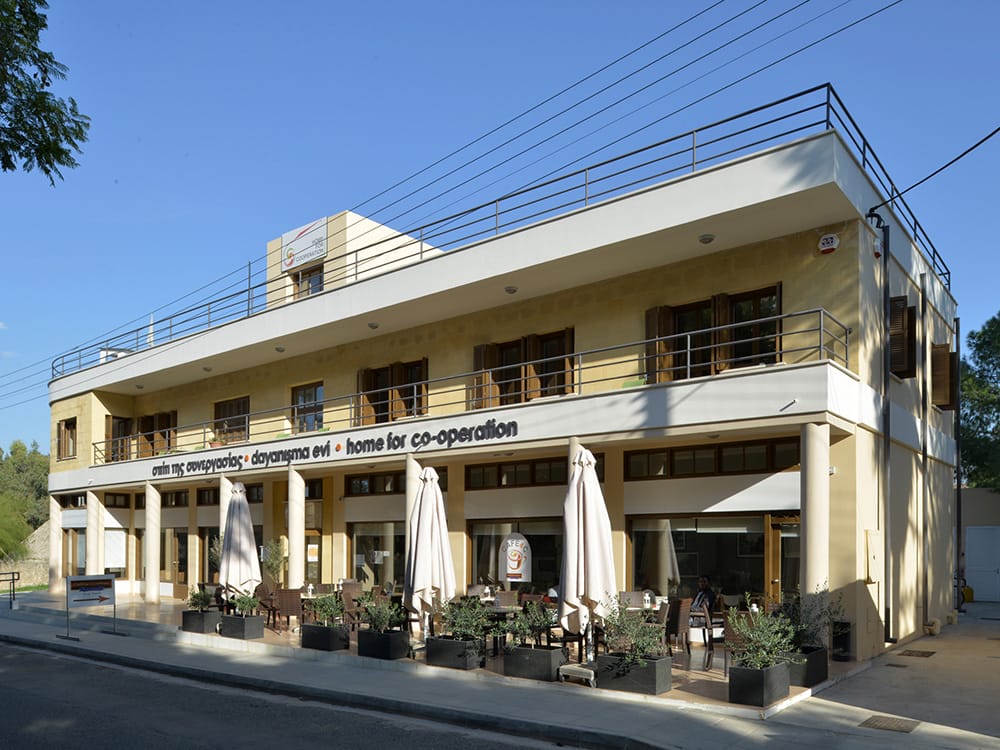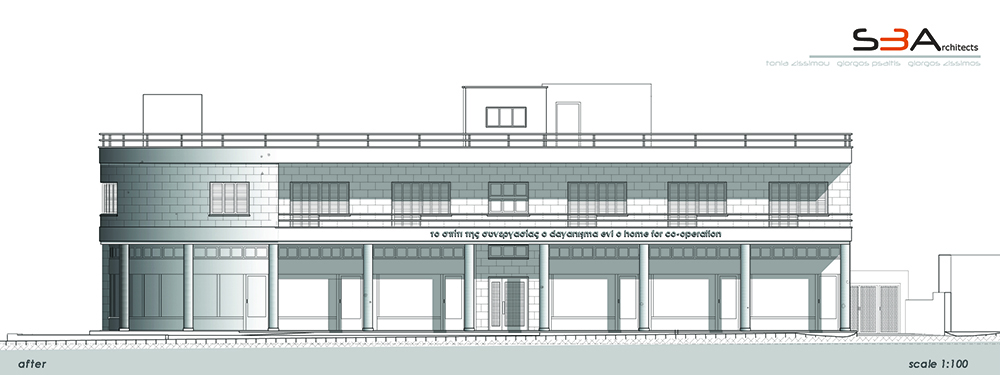Europa Nostra Award 2014 to the Home for Cooperation, Nicosia UN buffer zone, Cyprus
HOME FOR COOPERATION
STUDIO3ARCHITECTS
2011 | Realized
Nicosia, UN buffer zone
The Home for Cooperation (To Σπίτι της Συνεργασίας (Gr) – Dayanışma Evi (Tr)) was awarded the prestigious European Union Prize for Cultural Heritage, Europa Nostra Award, in the Conservation category amongst a selection of 160 projects from 30 countries. The project has been an extraordinary challenge for the promoters and the technicians who implemented it. Thus, the award constitutes an outstanding success for all involved actors and especially for those who strongly believed in the idea since its conception and supported it in all possible ways.
The H4C was awarded with other 12 projects in the Conservation category amongst a total of 27 awarded projects in all categories:
“The Jury felt that the Home for Cooperation was something to be really proud of. It constitutes, they felt, a substantial contribution to the revitalization of Nicosia’s United Nations Dead Zone as well as to the wider peacemaking procedure. Furthermore it represents a typical example of the 1950s architecture of Cyprus, which finds few supporters but which we are again starting to see as a brave and distinctive statement of the character of its period.”
http://www.europanostra.org/awards/126/
The H4C is much more than a cultural heritage restoration and reuse project. It is a unique peace project in Cyprus, which stands for cooperation and unity. It further contributes to the creation of sustainable livelihoods in similar conflicted spaces bringing the lacerated urban fabric out of socio-economic decline. Last but not least, it sends out a clear invitation to architects, planners and activists to re-evaluate the current role of architecture in a globalised world in crisis.
You can vote for the Home for Cooperation (plus other two projects) at the ongoing vote currently taking place until 22th April. http://vote.europanostra.org/
Promoter/Owner: AHDR, Association for Historical Dialogue and Research
Architects: studio3architects in collaboration with Etika Studio and the contribution of Atölye M
Major Sponsor: EEA/Norway Grants through Financial Mechanisms, initial grant: €1.022.803.
For further information: http://www.home4cooperation.info
Giorgos Psaltis
architect/project coordinator
studio3architects, Cyprus
Project Description
The building, a unique witness of the island’s recent history, was erected in the early ’50s attached to the Nicosia renaissance fortifications. This two-storey structure, is an expression of the island’s post WWII architectural movement which contributes significantly to the understanding of Modernism’s development in Cyprus. Located in a Special Character Area, it was the only building not listed as cultural heritage due to its location in the United Nations buffer zone. ‘Revitalising Dead Zone: An Educational Centre / Home for Cooperation’ was initiated in 2006 and was based on the premise that buildings of significant historic and architectural importance found in the capital’s UN buffer zone are subject to daily disintegration and thus in need of restoration. A steering committee was appointed by the promoters to overlook the procedures related to the purchase and restoration of the building for the project’s successful implementation. The management team comprising AHDR members and the Technical Team supervised all the project phases while actual restoration works lasted 15 months (02/2010-04/2011).
This project combines a substantial proposal on Conservation of European cultural heritage with concrete suggestions on Human resources development through the promotion of education and training, the advancement of research and dialogue, and the empowerment of our competence as critical thinkers and citizens of Cyprus, Europe and of the world. The uniqueness of the H4C lies on the fact that it was created by the Cypriot communities working together and in collaboration with the international community. It brought life in the ‘dead zone’, as it is accessible from both sides of the divide without having to cross the checkpoint of the other community and thus provides a neutral and shared space that can be used by all communities in Cyprus. Therefore, the project has been having positive, significant spill over effects and stands as an example and successful case study for local, regional, European and international comparisons. The H4C has been lately establishing direct links for cooperation and mutual promotion with similar centres and institutions/associations in conflicted areas of the Balkan Peninsula such as the Abrasevic Centre in Mostar and the Community Building Mitrovica/CiviKos Platform Kosovo, expanding thus its network also to Eastern Europe.
Since its opening on 5 May 2011, the H4C has been providing a shared space aiming to foster intercultural cooperation and dialogue. The H4C looks into the past without losing track of the future aiming to a) enable young people, educators, historians, researchers, activists and other agents to develop knowledge and critical thinking through hosting programs on education, training and research, b) provide opportunities for Non-Governmental Organizations (NGOs) and individuals to design and implement innovative projects for the empowerment of civil society and the enhancement of intercultural dialogue; c) encourage Cypriots in demonstrating the benefits of cooperation across the existing divide; d) enhance awareness of the complexity of local history and support conservation of cultural heritage.


